
In 2016, I introduced Geektimes readers to the TrendVision
recorder brand . This is one of the few
Russian companies that support their products and independently develop automotive “black cameras”. Moreover, the engineers of TrendVision in 2008 “brought to mind” the first registrars that appeared on sale in Russia. At the end of the winter of 2017, the company released a mini-line of two devices: TrendVision Split and Tube. New items clearly created by the canons of premium South Korean recorders such as BlackVue: a cylindrical body, Wi-Fi instead of the screen and a supercapacitor instead of a battery. Only they cost not 20-25 thousand rubles, but about 8-9 thousand, several times cheaper. And thanks to this claim for the title, perhaps, the best registrars at least 2017. Why? I'll tell you now!
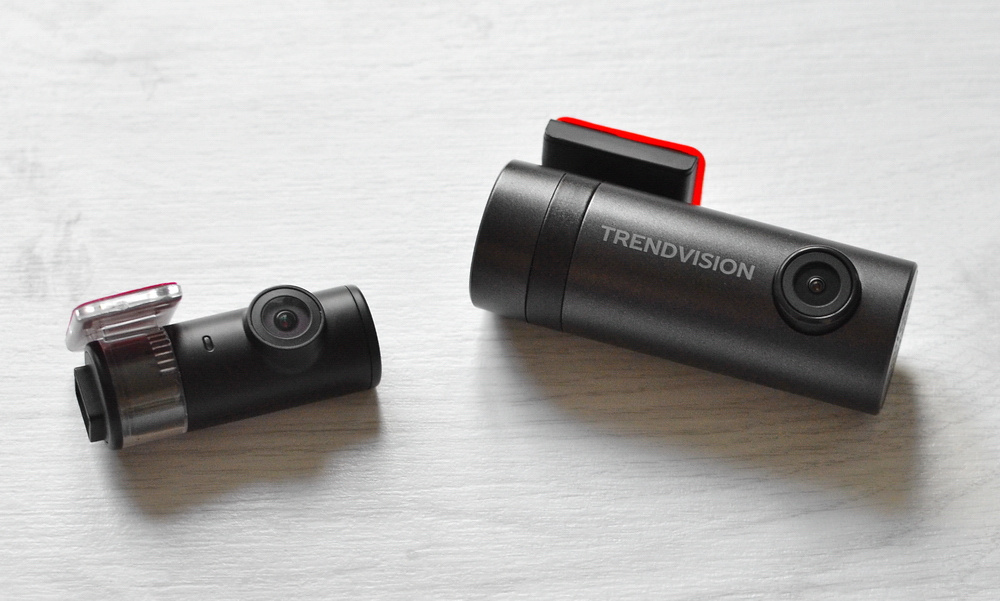
Design and installation
Both TrendVision Split and TrendVision Tube are cylindrical. If we consider this fact from the point of view of global trends in the field of recorder building, then TrendVision with these models is in the forefront. While almost all Chinese companies and most Russian brands are riveting models in the long outdated and bored parallelepiped form, TrendVision has adopted a cylinder. Cowon, BlackVue, ThinkWare do the same - Korean companies, which are much better with industrial designers than small Chinese factories, where the lion's share of regs for Russia is developed. In general, TrendVision Split and TrendVision Tube look technologically and modernly - a good world level.
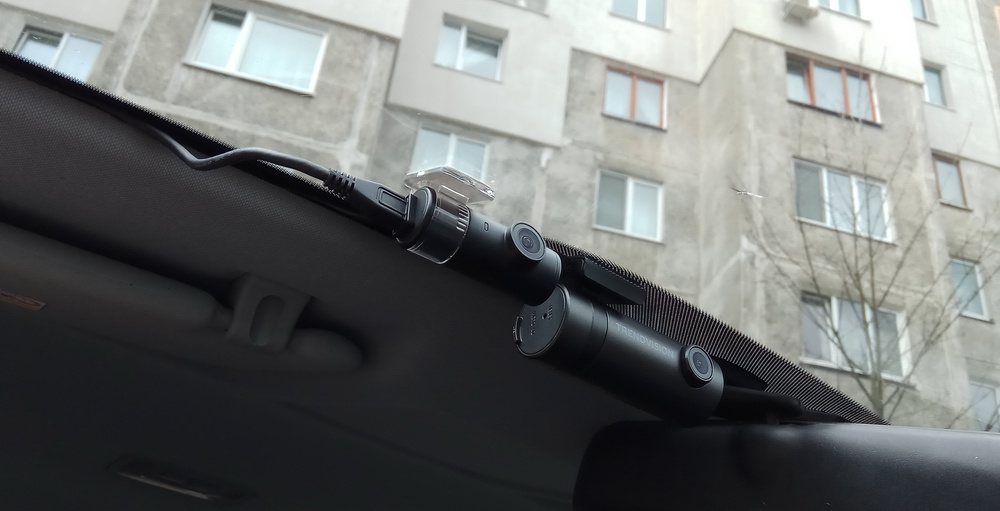
Despite the fact that TrendVision Split and TrendVision Tube are similar in appearance, the design or, more precisely, their ideology is completely different. TrendVision Tube is slightly larger, and this is, let's say, the usual recorder. That is, all the "iron" is located inside the cylindrical body.
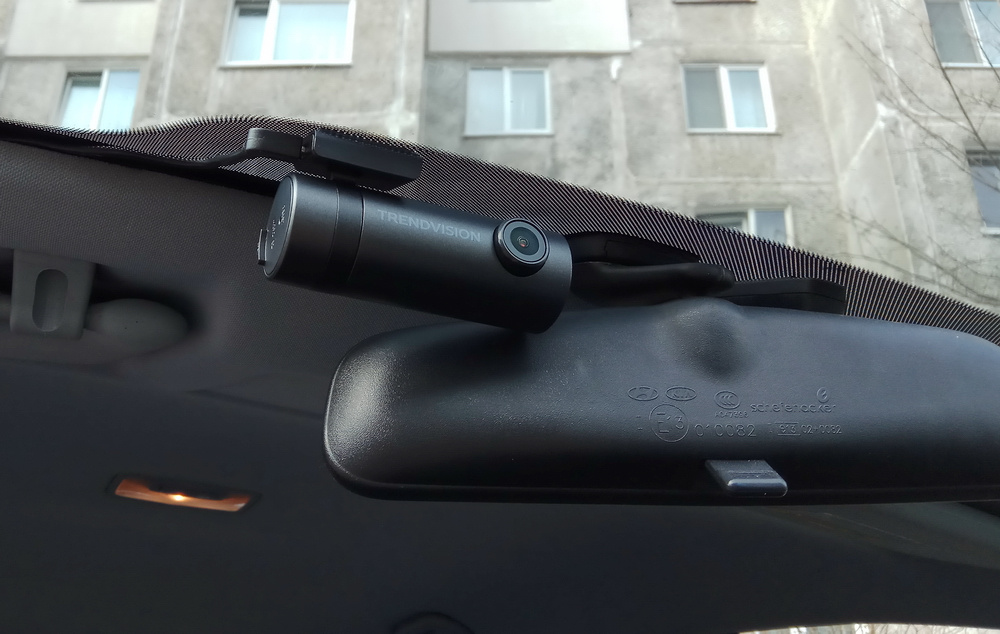
On the TrendVision Tube case a minimum of elements. On one of the faces - a very loud speaker for the sound of voice alerts (for example, the start or stop recording).
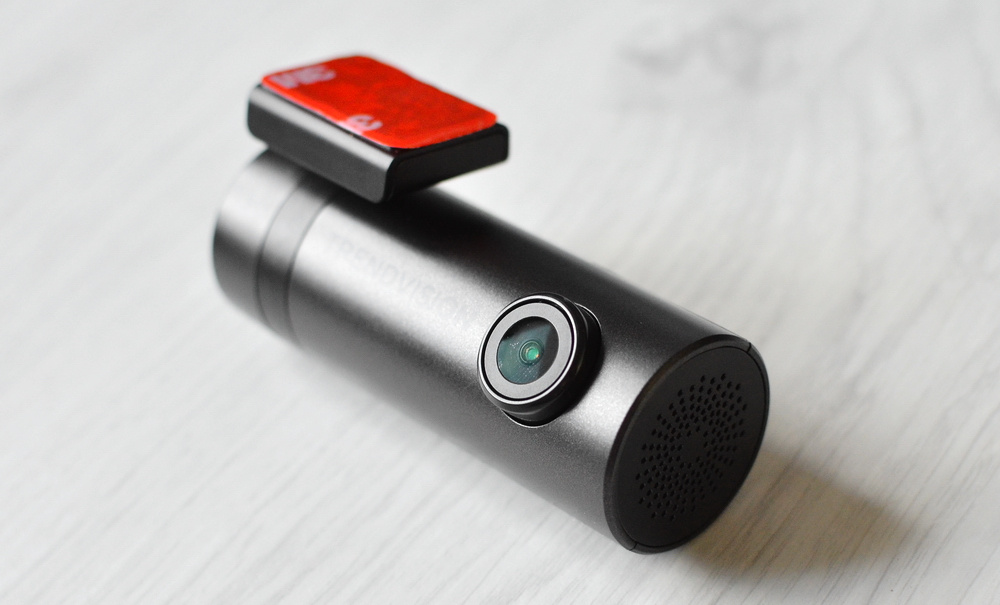
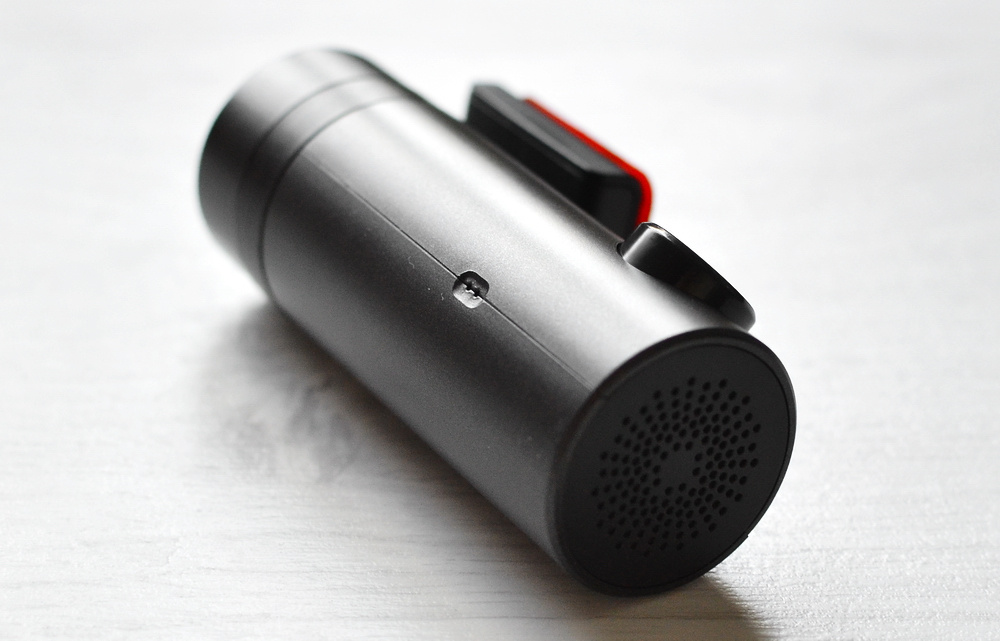
On the other - the “door”, behind which there is a slot for MicroSD cards and a reset key. However, it is possible not to open the “door” button, since the latter has a hole for a needle, pin, toothpick or other thin stick that can be used to put pressure on a key.
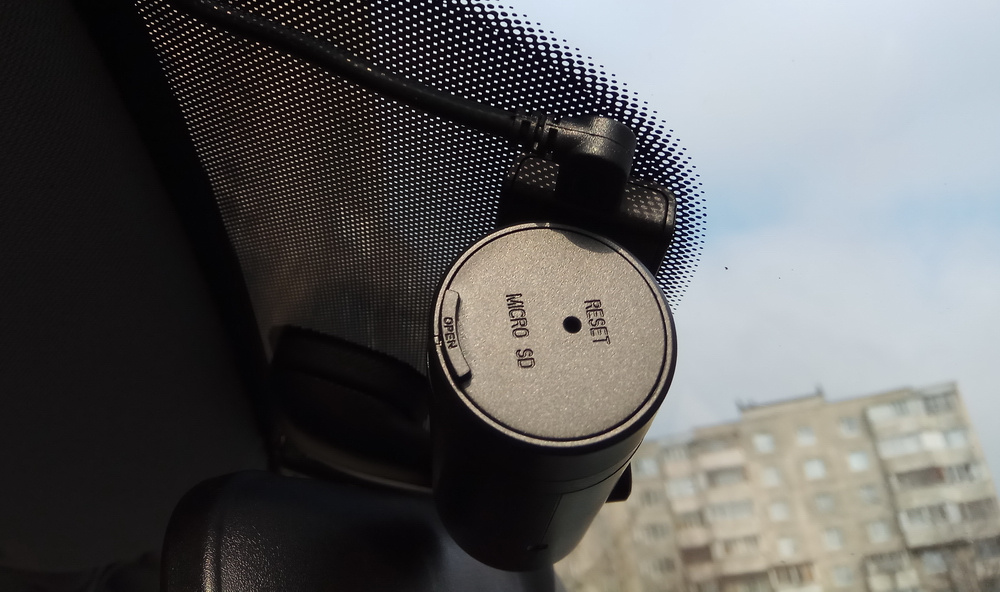
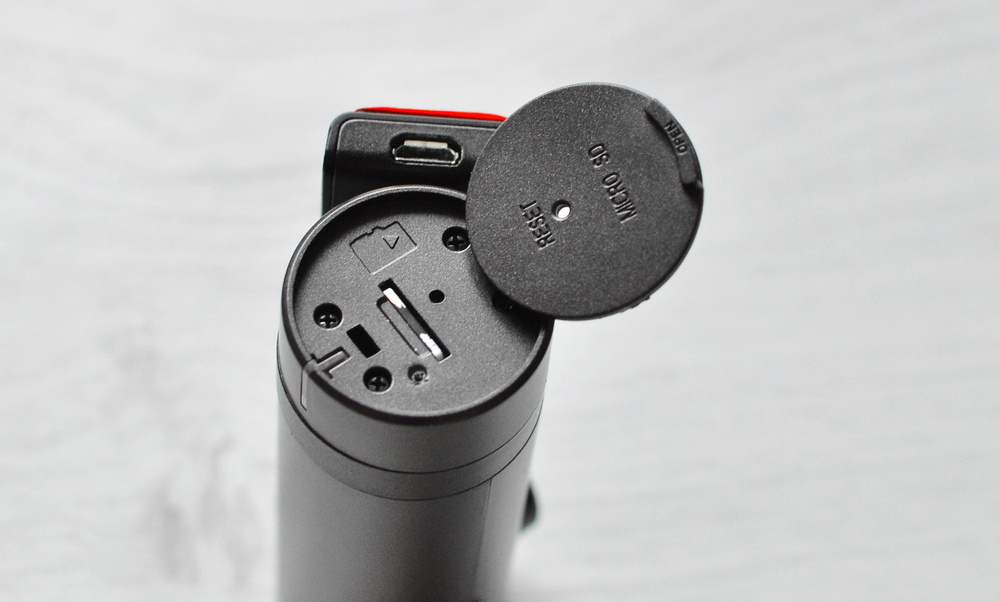
Also on the case there is a camera lens and an LED indicator of device operation. The latter is located on the back of the model - so that the driver is aware of whether a record is being kept at all.
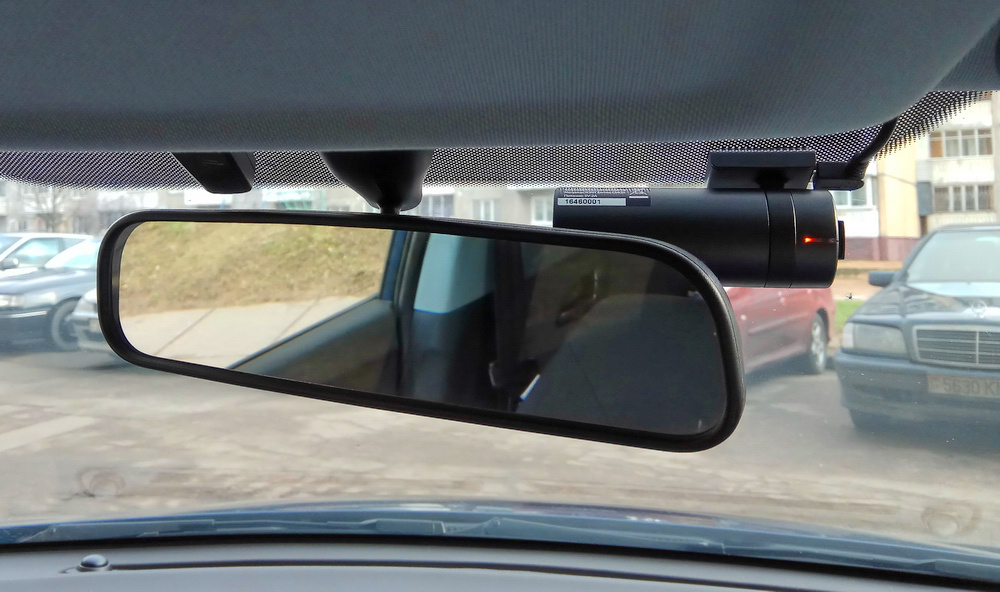
The TrendVision Tube mount is non-removable, it is a single unit with the recorder. The bracket is extremely miniature, it is attached to the glass with 3M adhesive tape.
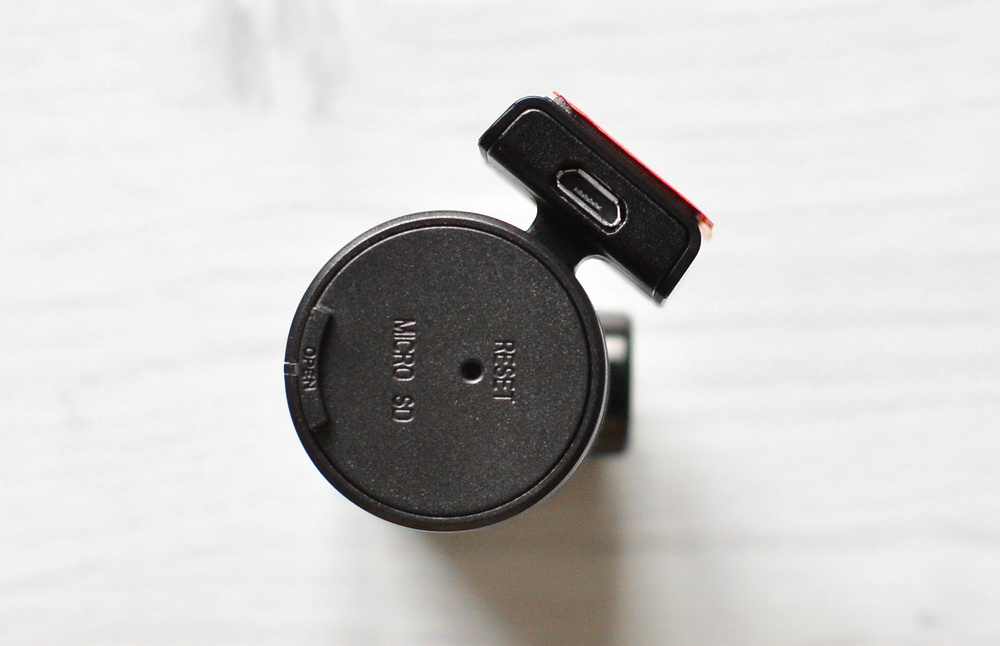
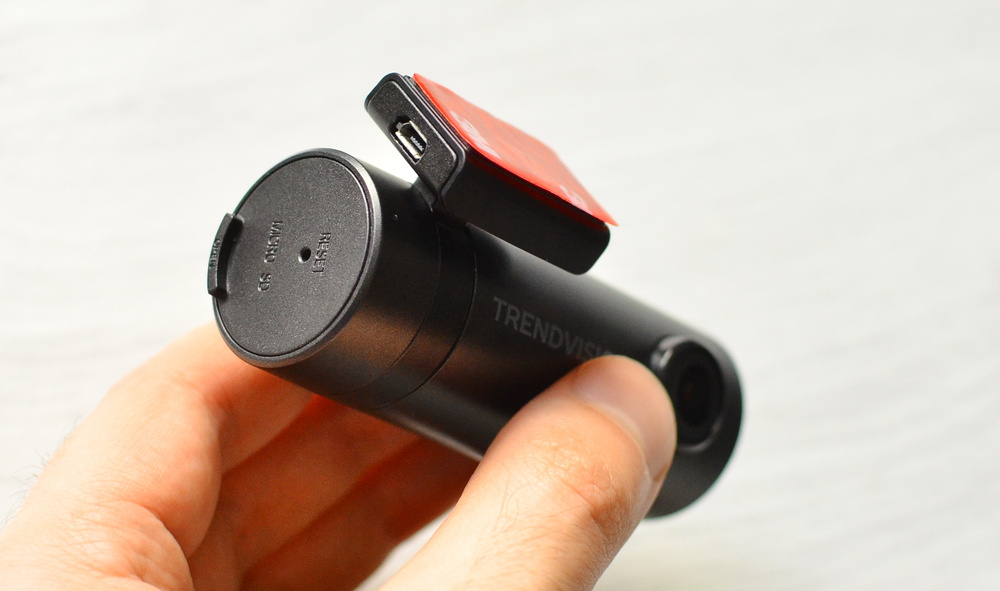
Power is supplied to the recorder through the holder, for which a microUSB port is provided in the “leg” of the bracket. For convenience, the power cable plug is made L-shaped, so that the wire does not break when leading to the upper edge of the windshield.
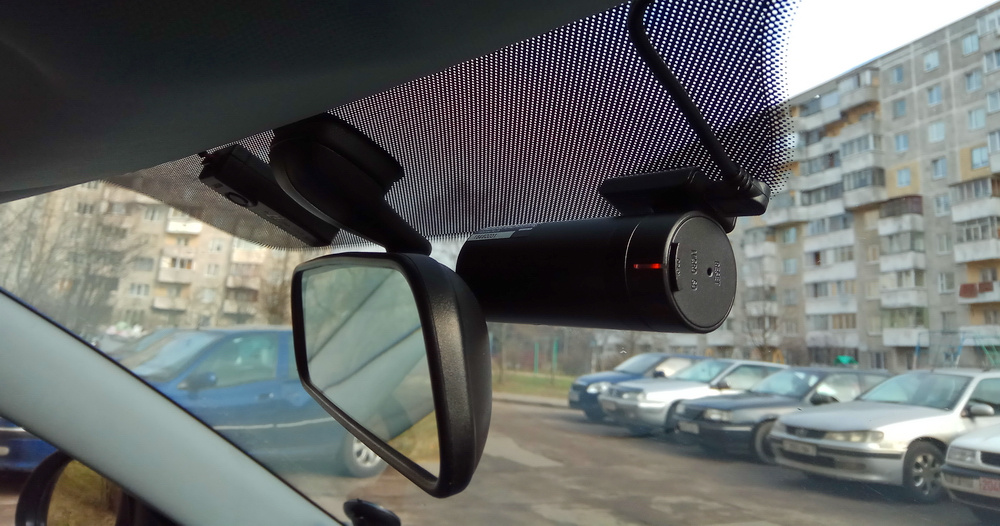
The camera scrolls into the holder, so the optimum lens tilt is selected. Turning to the side of the model will not work, so that from a conversation with the inspector you will only have an audio recording. However, as practice shows, the very presence of a registrar is usually the most positive effect on the politeness and constructive communication of the traffic police representatives.
From the very very unusual and cool, I note the remote control. A kind of "pill" with one button that can be fixed ... Yes, even on the steering wheel. Or on the dashboard. Or between the seats.
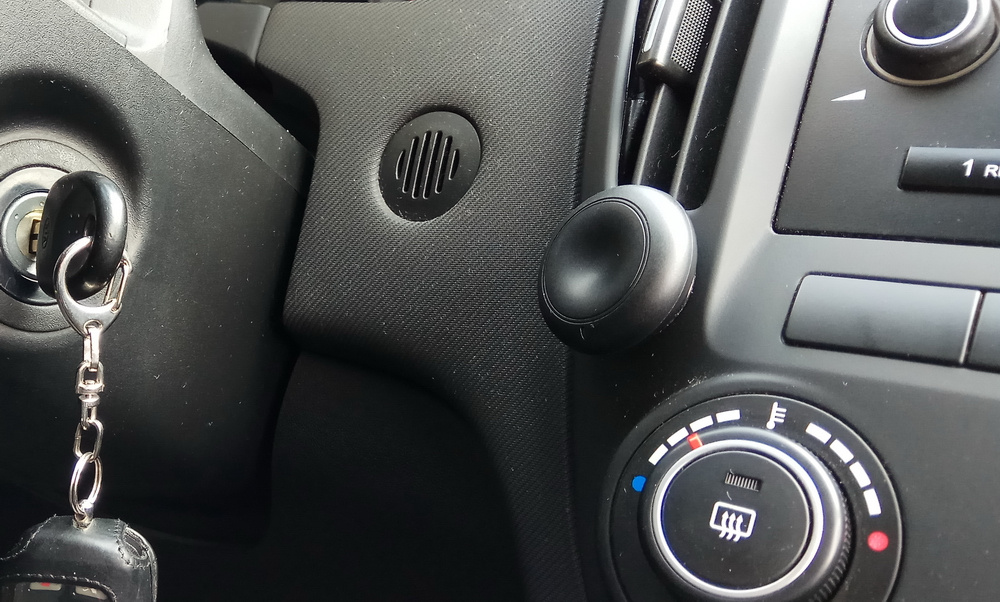
The remote is connected to the recorder via Bluetooth and runs on its own battery (enough for at least 3-4 months).
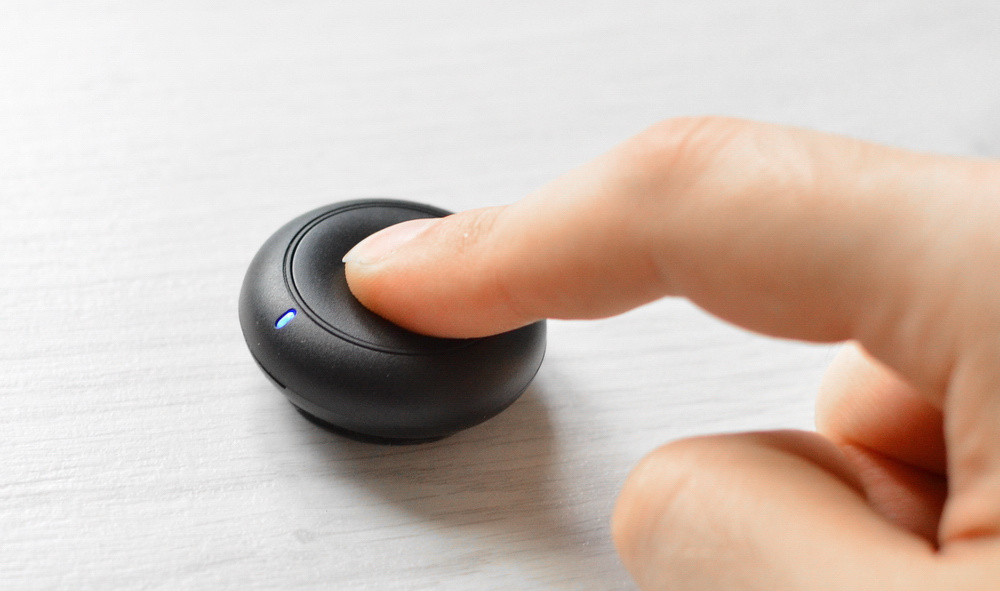
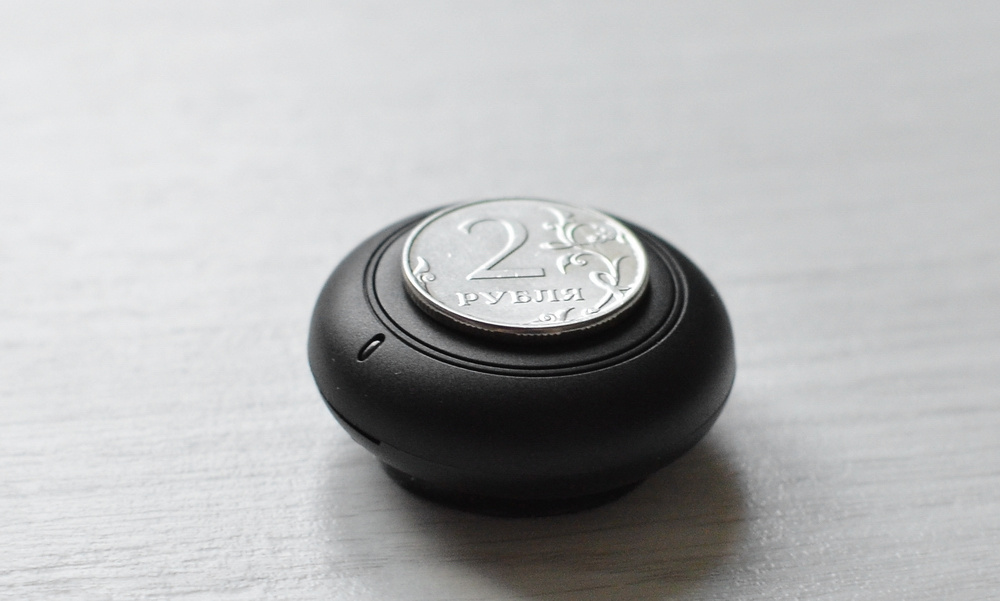
After clicking on a single button, a photo is created and a 10-second video fragment is saved (5 seconds before pressing and 5 after), which is transferred to the non-erasable area on the memory card. The same, by the way, happens after the G-sensor triggers, so the remote actually duplicates it. Although something interesting on the road can happen without an emergency, so the remote can certainly be useful. Oh yeah, and also: clicking on the button on the remote starts the automatic transfer of video to the smartphone, if it is currently connected to the TrendVision Tube via Wi-Fi.
TrendVision Split is completely different. The recorder is divided into a camera and the so-called control unit.
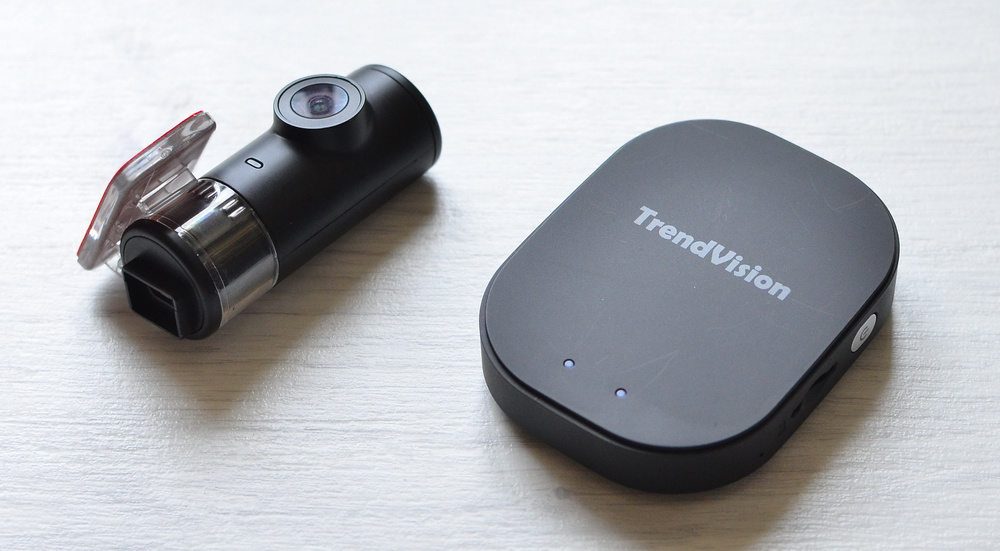
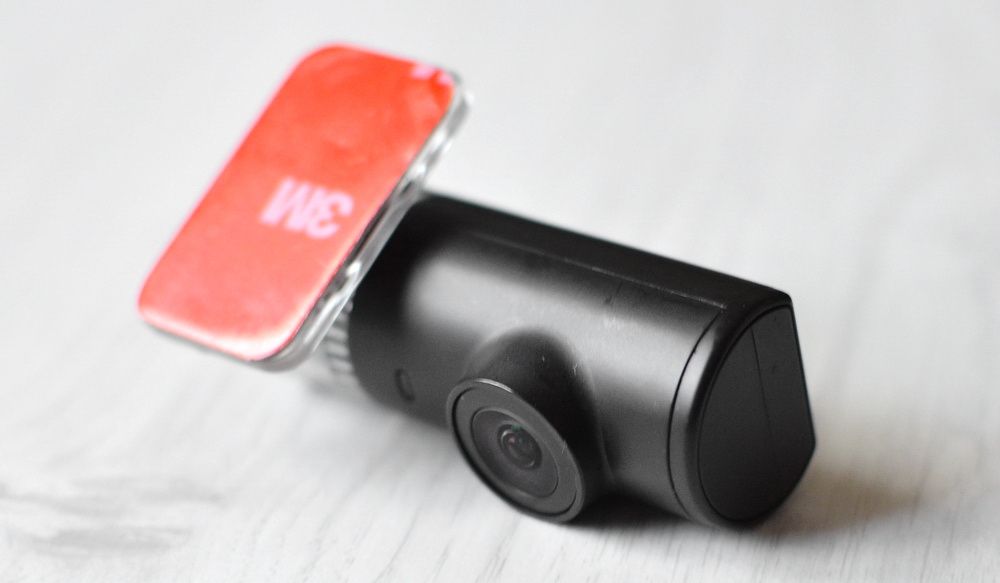
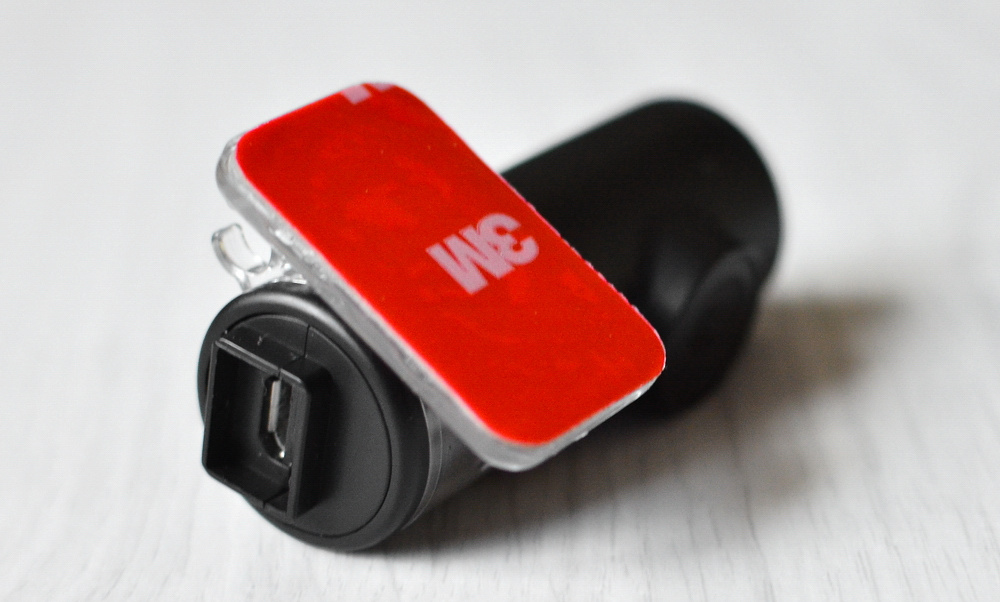
That is, in the cylinder fixed on the glass, there is only a camera (by this we mean a bunch of “matrix + lens”).
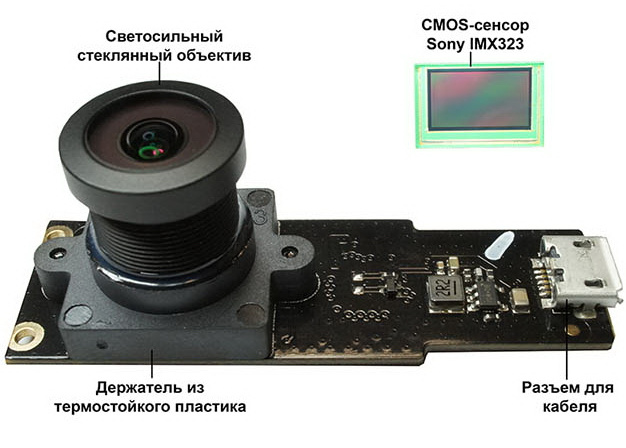
But everything else - from the video processor to the connector for connecting the power cable - is located on the control unit. The camera and control unit are connected by a cord.

Why was it necessary to divide the recorder into two parts? But just so that the module with the camera, which is located on the windshield of the car, was as miniature as possible. Considering that the fastening of this module itself is also microscopic (I will talk about the bracket a little lower), TrendVision Split will under no circumstances interfere with the driver's view. Moreover, due to the dimensions, the recorder is not visible from the outside of the car, so it is not at all scary to leave it in the car for the night.
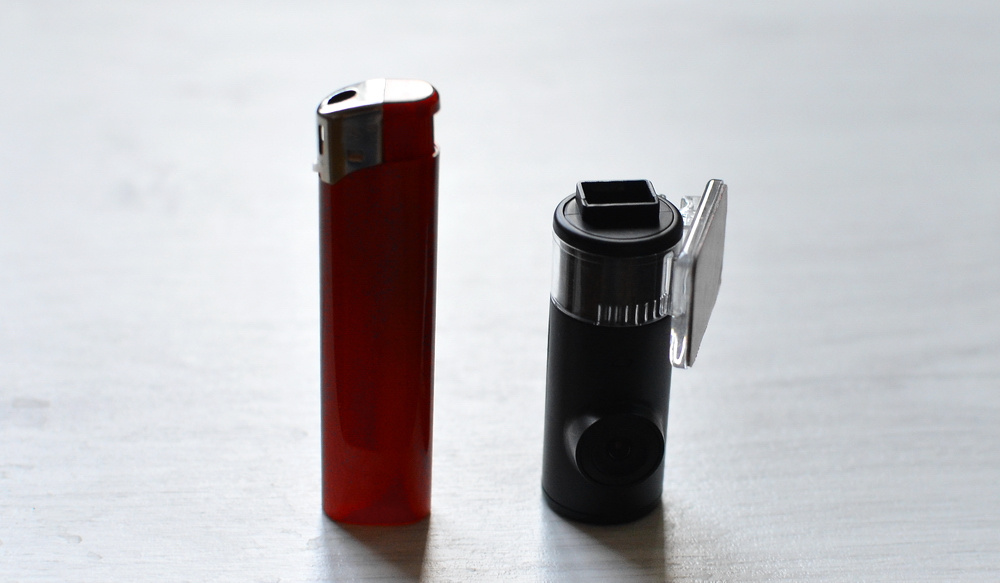
The module with the camera from the TrendVision Split is mounted on the glass with the help of a fixed 3M-bracket that resembles the TrendVision Tube. Is that the power cable is connected directly to the connector on the TrendVision Split camera, and not to the bracket, as in all of the same TrendVision Tube.
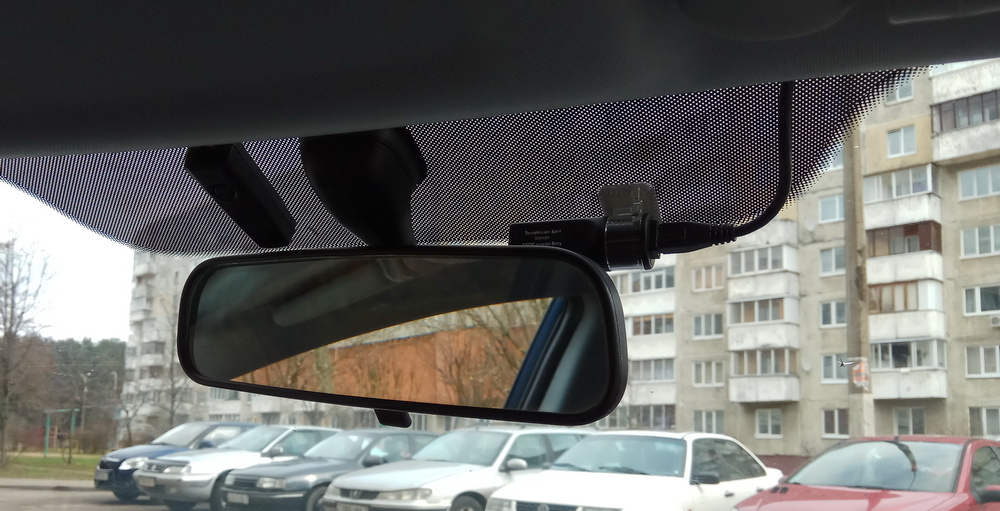
There are no other elements besides this power connector on the TrendVision Split camera. Unless, of course, do not consider the lens and LED. For the exact direction of the camera on the road, you can rotate it in the holder around the axis - that is, everything is exactly the same as the TrendVision Tube.
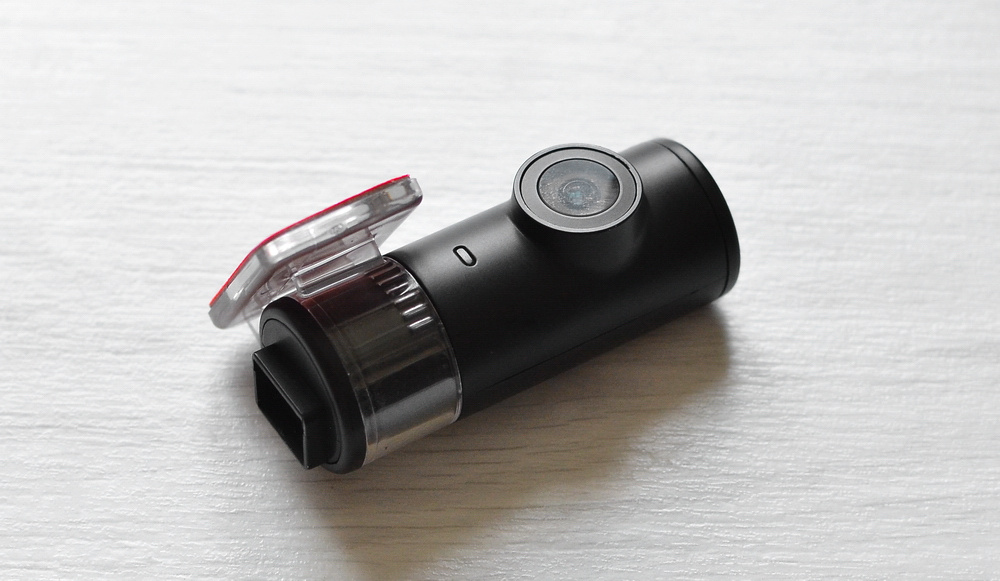
The control unit looks like a set-top box - like Apple TV. Although in size it is noticeably smaller, about as much as one and a half matchboxes. On the block there is a slot for MicroSD memory cards, a power key (short press to start / stop video recording), a microphone, and two connectors. The module with a camera is connected to the first one, and the power cable, which is then inserted into the cigarette lighter, is connected to the second one. Well, let me remind you that the video processor, motherboard, ionistor, and other "hardware" is located in the control unit.
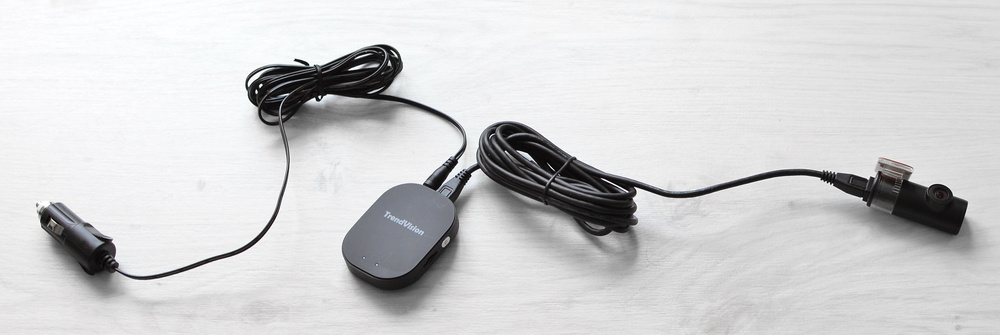
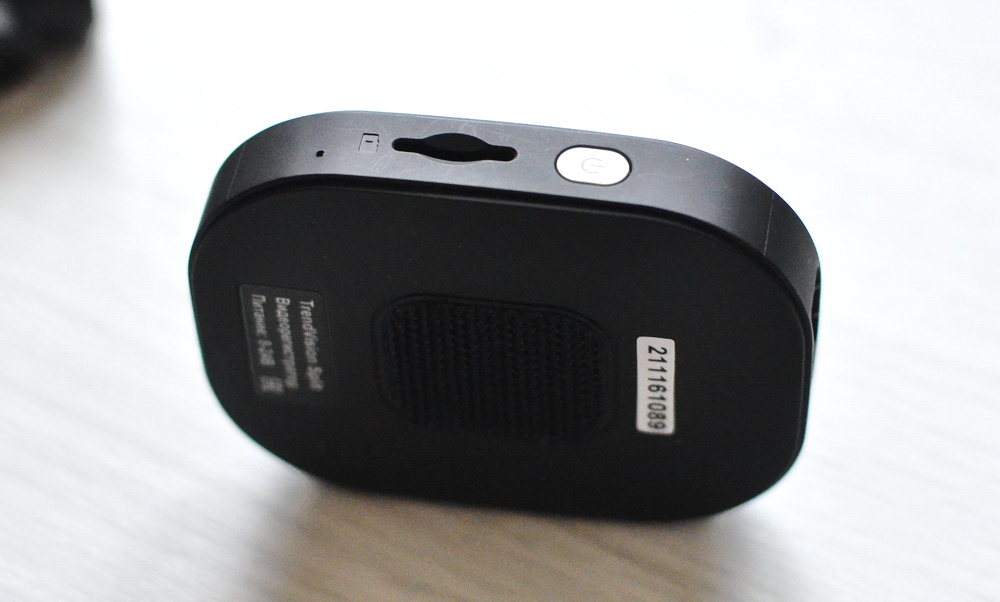
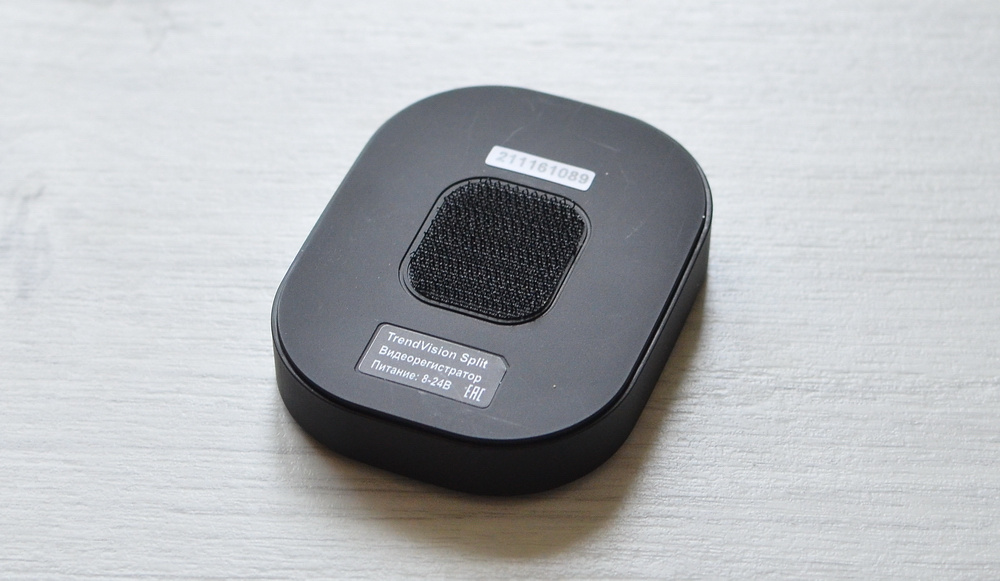
Where exactly will be the control unit - the driver himself is free to decide. It can be placed, say, to the left of the steering wheel, in the gap between it and the door. For this, a flat square holder is molded onto a panel on a 3M-tape, and a control block is attached to it on a velcro. Also, the latter can simply be thrown into the glove compartment, this option is also quite acceptable. However, it should be remembered that the microphone for sound recording is located on the control unit, and if you hide it too far (in the same glove box), the quality of audio recording will not be too high (if anything is heard at all).
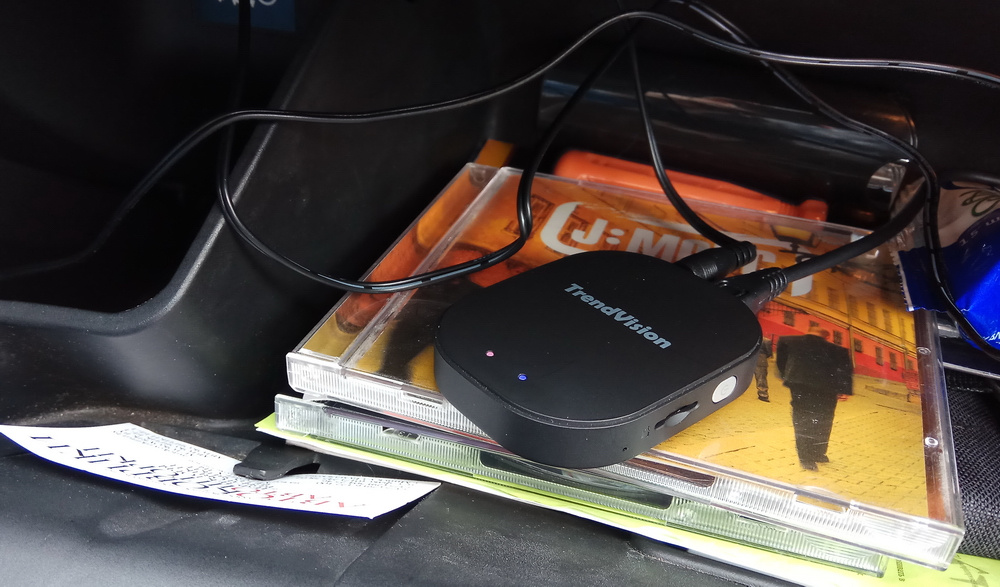
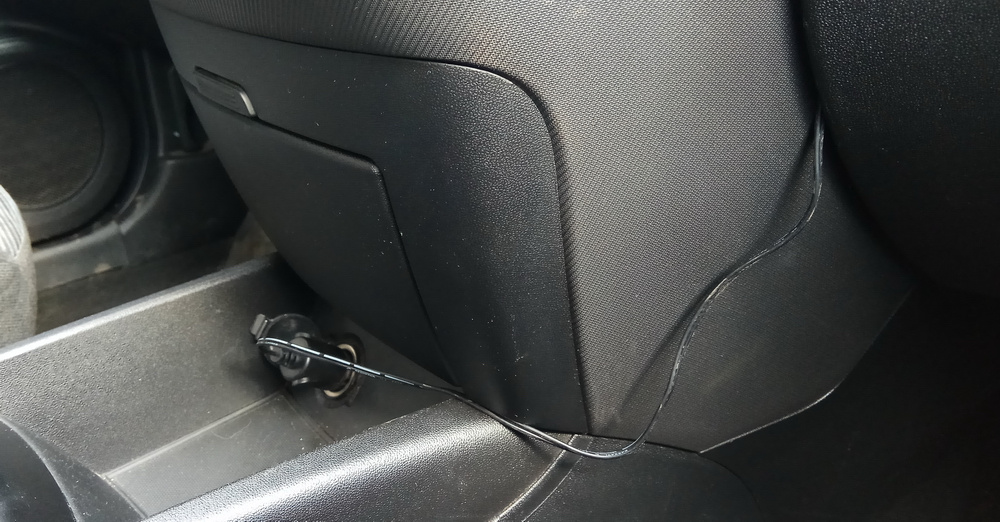
What does TrendVision Split and TrendVision Tube have in common, besides the hull shape? The ability to control and configure using the application (available for Android and iOS) from a smartphone via Wi-Fi. Below are the screenshots of the program for TrendVision Split. The set of options is extremely limited, which I personally would write in a plus - no one confuses the user. There is an on / off sound recording, setting the duration of the clips, the choice of frequency and options for Wi-Fi. If you want a hundred menu items, look in the direction of TrendVision TDR-719S.
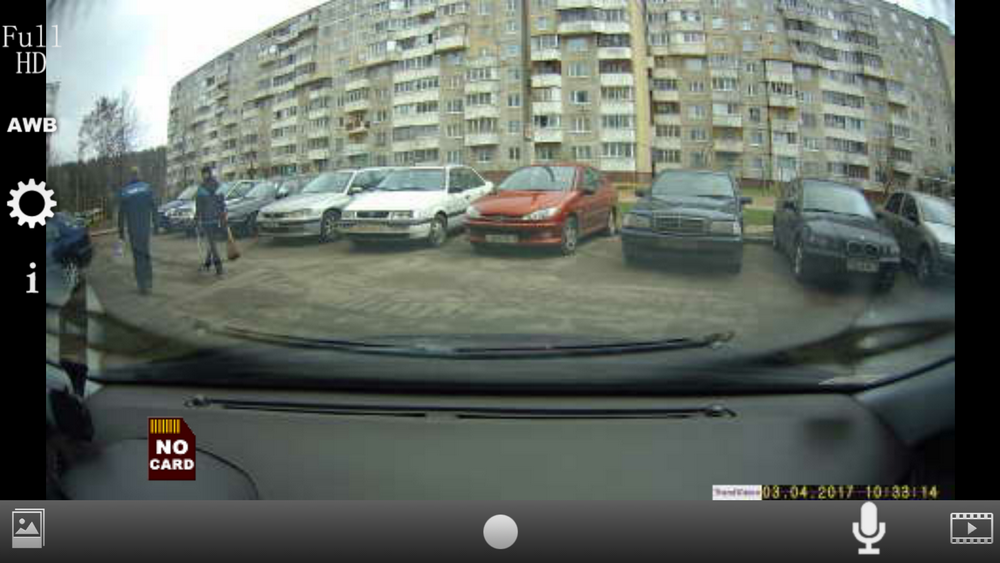
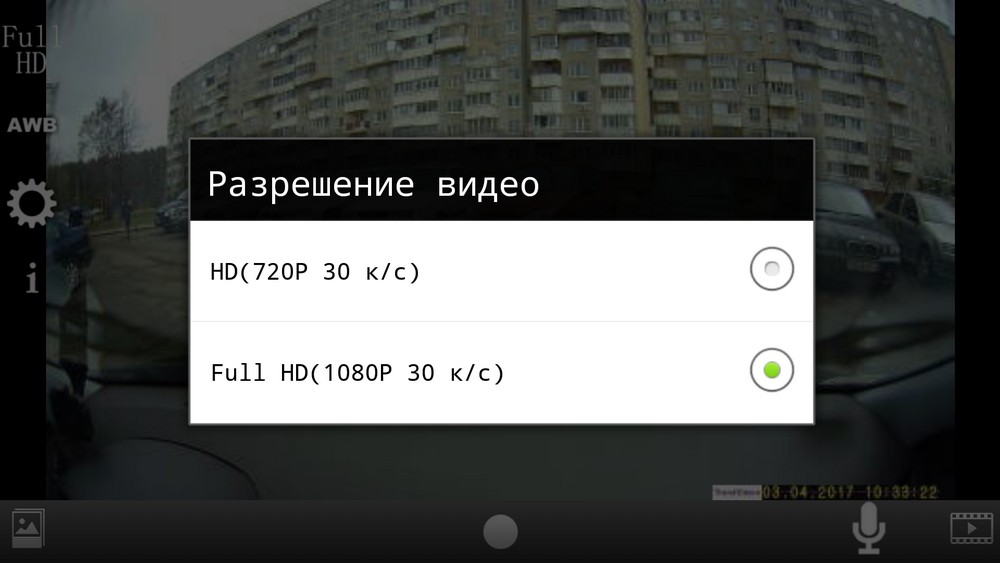
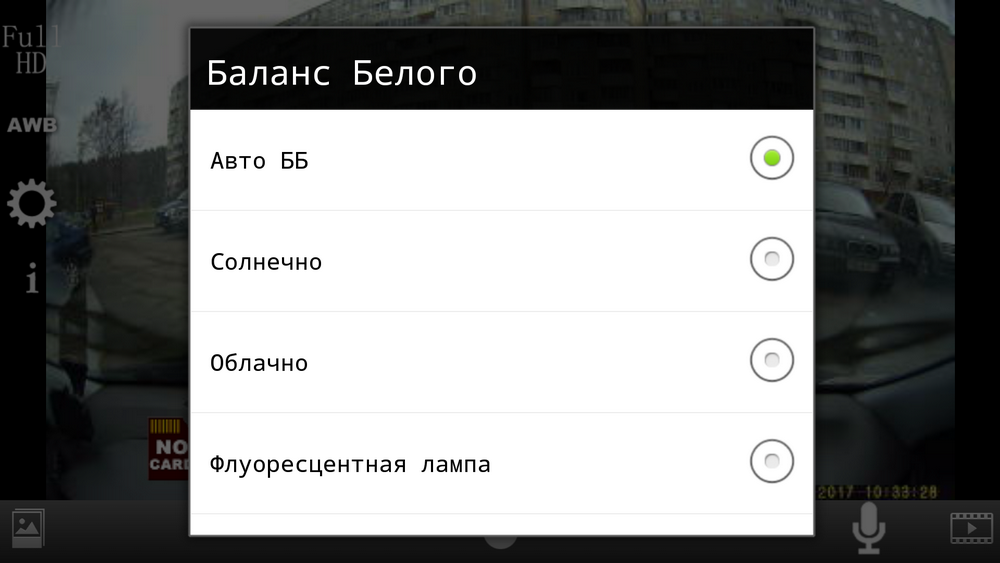
But the program under TrendVision Tube - whatever you say, looks much more attractive. There are a few more settings, but frankly, it is not fundamentally different from that of Split. Is that parking mode is. Well, in general, it is nice that the models offer their own programs, instead of some universal utilities of Chinese masters.

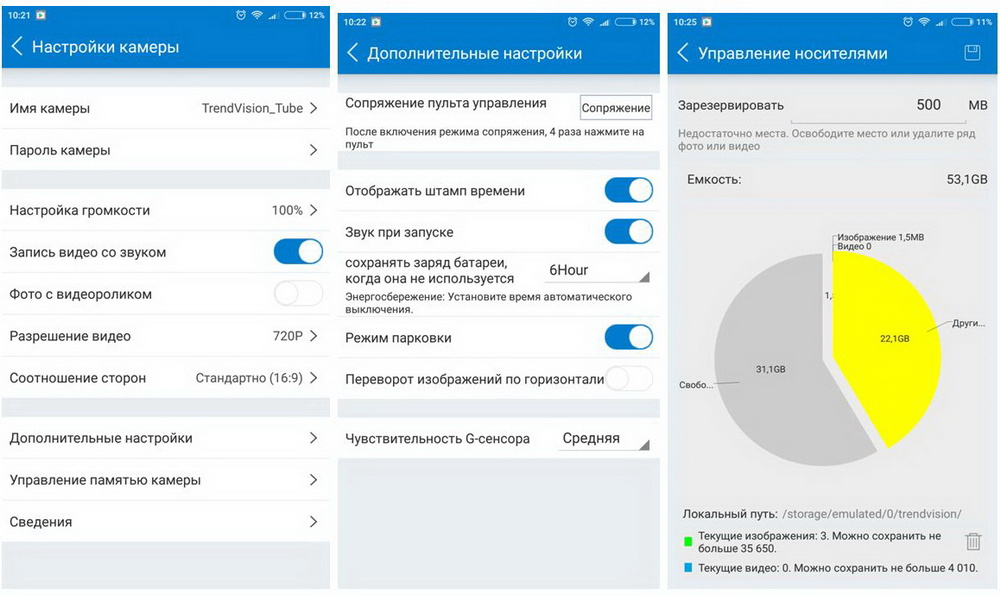
Immediately, I note that there is no point in highlighting a story about additional features in a separate section, except for the secondary features, except the G-sensor. No GPS, speed skins or other often not the most really useful chips, it's not here.
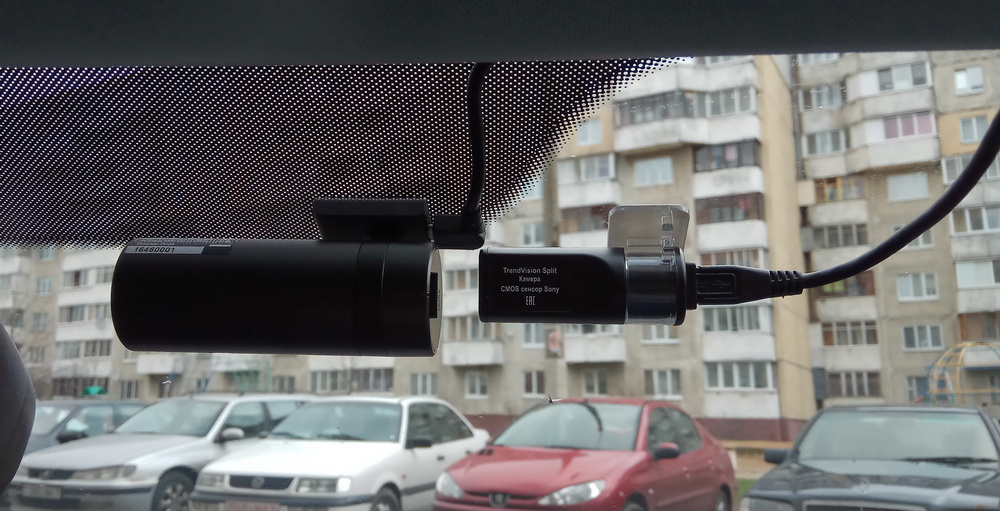
What else do the two registrars have in common? The presence of an ionistor or, in other words, a supercapacitor. This element, I recall, provides the ability to correctly save the video after the loss of power from the on-board network of cars, as well as the possibility of a smooth start of work even at a temperature of minus 30 degrees Celsius. Registrars with conventional lithium-ion batteries often surrender even at minus 10 (or even simply at “minus”), requiring the cabin to warm up. TrendVision models with an ionistor do not have this problem. By the way, attentive readers probably noticed the watch battery in the photo of TrendVision Split internals, which allows keeping the date and time correctly when the power is off. In conventional recorders, this function is often assigned only to a regular battery. If it is discharged or fails, you know, the date and time settings are lost.
Equipment
Usually the section with the story about the equipment comes before the story about the design, but in this case I decided to swap them. Because the individual elements of the assembly are so important that it was necessary to describe their roles precisely in the context of the design and installation process of TrendVision Split and TrendVision Tube in the car. So now it remains to list the other accessories already known to you that I found in the boxes.
Package TrendVision Split includes:• Camera unit.
• Control unit (see above).
• Cigarette lighter power cable that connects to the control unit. Length - 3 meters.
• Cable to connect the camera module and control unit. Length - 2 meters.
• Square fastening with velcro for mounting the control unit.
• Three spare pieces of double sided 3M tape for attaching the camera module.
• User's manual.
• Warranty card.
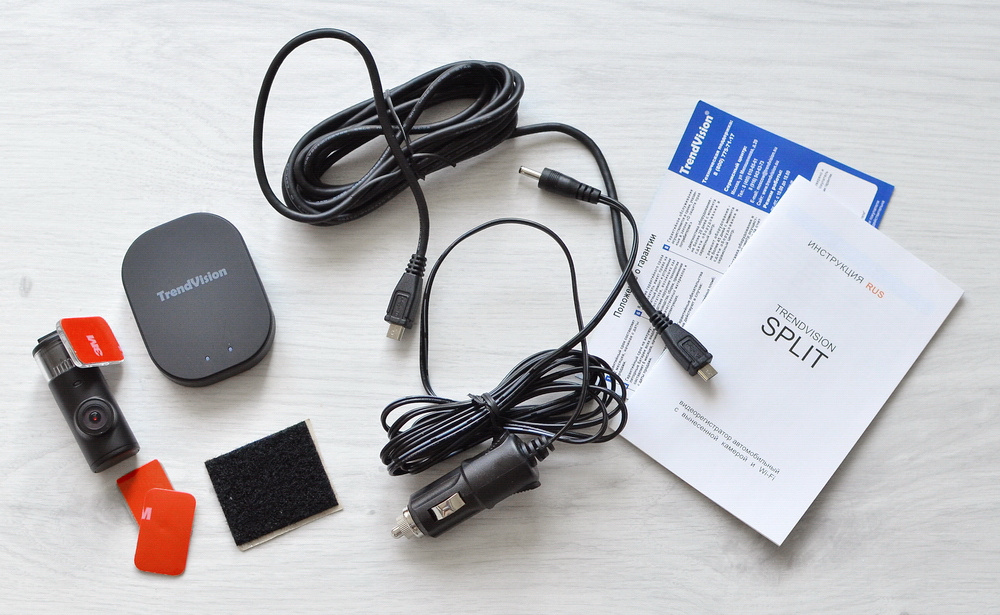 Package TrendVision Tube includes:
Package TrendVision Tube includes:• DVR.
• Remote control with a “tablet” battery installed.
• Two spare mounts for the remote.
• Charging unit in the cigarette lighter with two USB ports. We connect TrendVision Tube to one, and through another you can charge some other gadget, for example, a smartphone. The total current strength is 2.1 A - that is, you will charge the phone no slower compared to connecting to a regular outlet. For your information - in the absolute majority of registrars power adapters, only 1 A is given both to the camera and to a USB-connected device.
• USB cable to connect the recorder to the charging unit. Perhaps readers will tell me other models in the comments, but after the cameras Datakam is the only device that has a power cable with a velcro for the tie, just like a laptop. Very zdorovskaya thing that allows you to not hang the cable anyhow, as throughout the cabin.
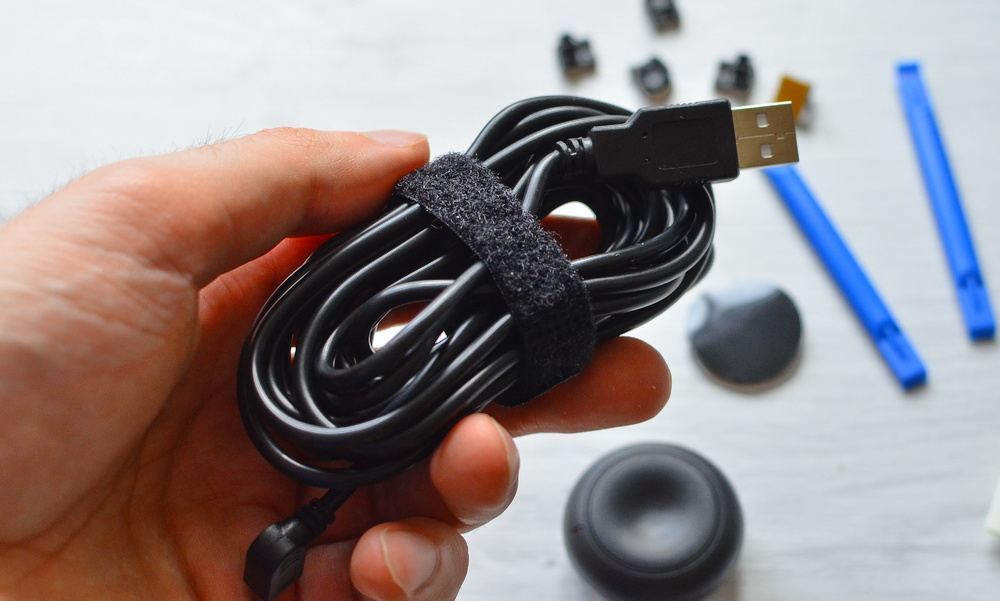
• Five hooks on 3M-scotch for laying cables in the car.
• User's manual. Like the "guarantor" manual printed on a rather unusual quality paper with vertical relief.
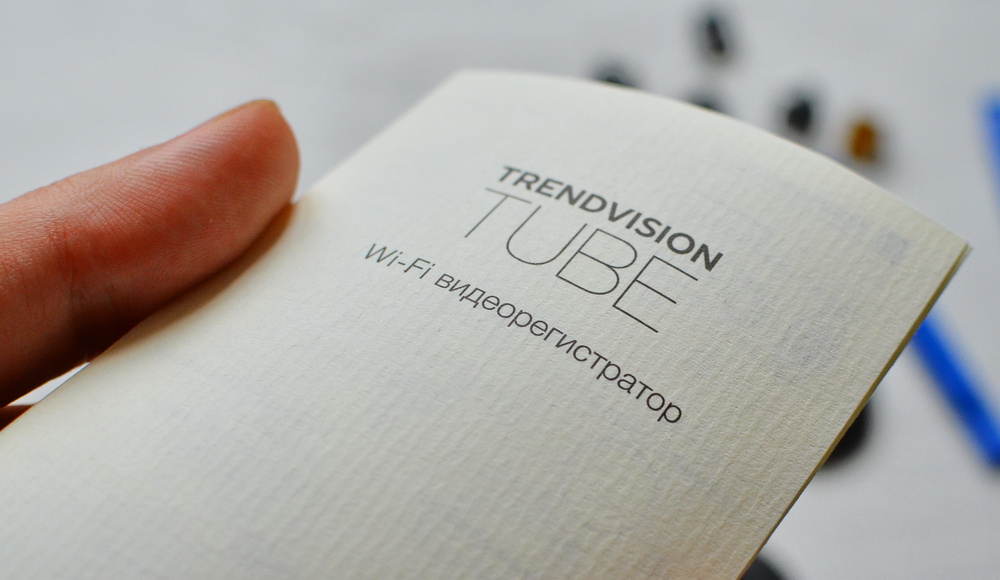
• Warranty card.
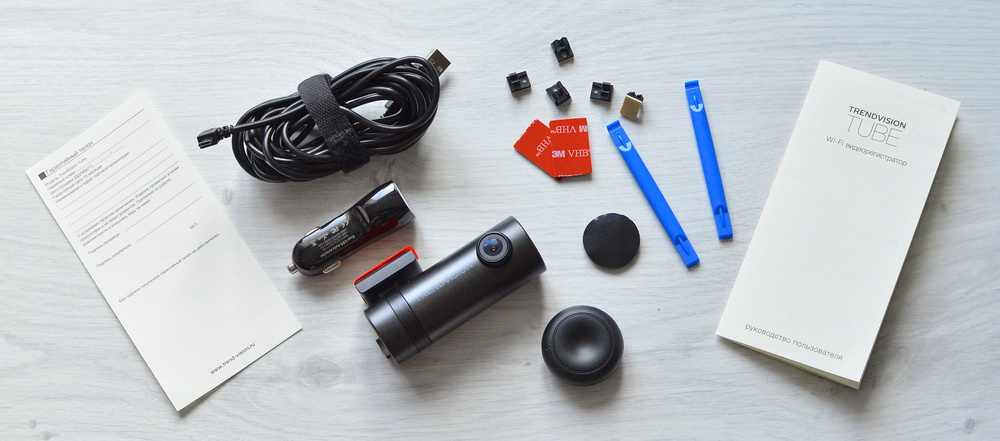
I will remember the kind word of the box from both recorders. They are made of high-quality black cardboard, and all accessories are laid out in separate boxes and envelopes. Typically, a similar level of packaging is observed in flagship smartphones, but recorders and complete accessories are usually packed in boxes, using the principle of “anyhow, just to lose nothing”. I am glad that TrendVision chose a different path. Expensive-rich is just about the TrendVision Split and TrendVision Tube packaging.
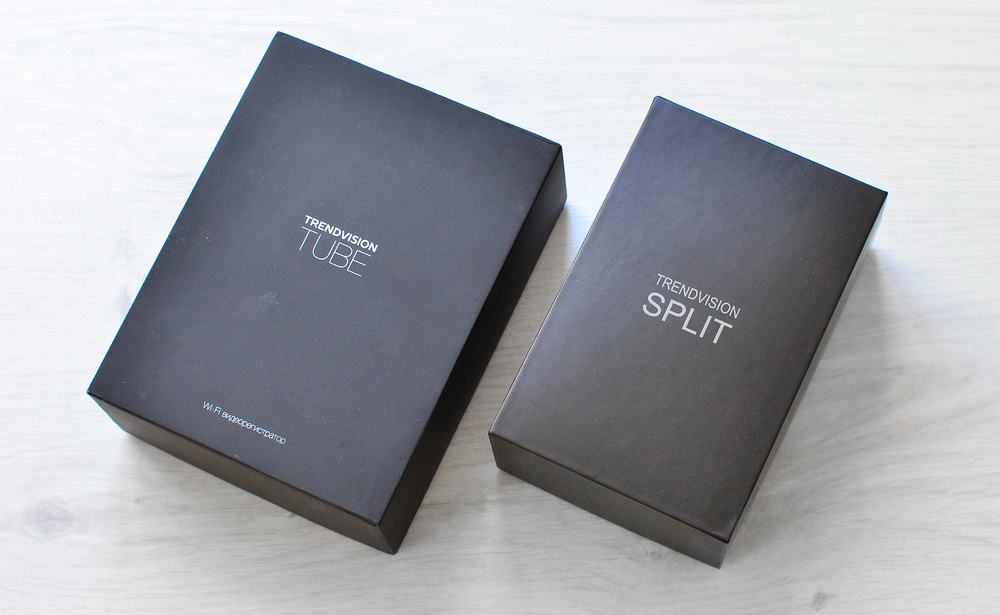
Videography
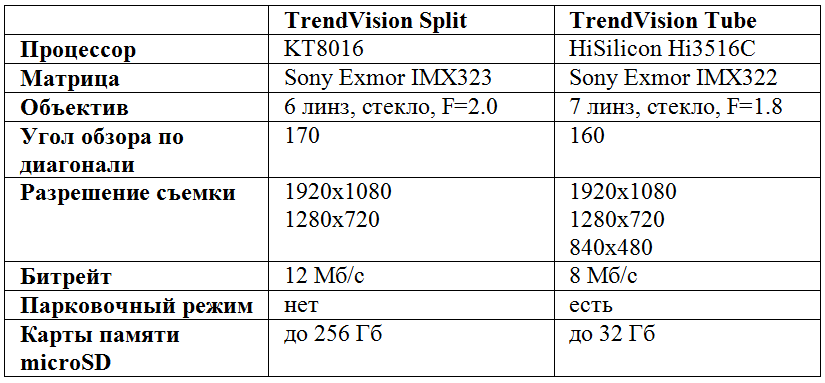
I will give below examples of video filming of both models, but, looking ahead, I can immediately say that the quality of the recording is almost identical. Therefore, I would make the choice between two devices primarily on the basis of functionality - due to a more powerful processor, the TrendVision Tube has a wider set of options, just recall a parking entry. Although the last moment I could hardly call critical. The lack of parking mode TrendVision Split more than compensates for supporting memory cards up to ambitious 256 GB, which is extremely rare in registrars, in principle, not to mention models worth up to 10,000 rubles. “Proshed” readers probably guessed that the exFAT file system is used here, and this allows you to work with a microSD volume of at least a couple of terabytes.
So, about recording in a stopped car without a driver - in normal recording mode with Full HD resolution you will have about 64 GB of space on the memory card to fit the shooting for 10-12 hours. For example, TrendVision Tube cannot do this because of the card size limit of up to 32 GB.
There is no way to say anything special about the processors, the “stones” of the models in question are not very popular and can mostly be found in IP cameras. The limited (as compared with, say, Ambarella A7LA30) possibilities probably had a very positive effect on the price of components, and in the final analysis, of recorders. There is no support for WDR and HDR, fashionable security systems like LDWS and FCWS too. In my opinion, most users will hardly regret it.
Japanese Sony matrix recorders are identical in quality of shooting, all other things being equal. The differences lie only in the production technology, because of which the Sony Exmor IMX322 looks more solid thanks to the ceramic substrate. But this sensor is harder to get, whereas for the Sony Exmor IMX323 manufacturers do not have to be recorded in the queue almost half a year ahead. CMOS sensors themselves have a large “common” size of 1 / 1.3 ”, and each pixel is 2.8 x 2.8 microns.
Is it a lot or a little? For comparison, take the matrix OmniVision 4689, which is installed in 100% of recorders with support for Super HD shooting. Here, with 4 Mp and 1 / 1.3 ”pixel it turns out less - 2.2 x 2.2 μm. And the physical size directly affects the photosensitivity (the more - the better), that is, the quality of shooting in low light conditions. It is obvious that, other things being equal, the “Japanese” will cope with the night recording better than the American OmniVision with the development and testing center in China.
With the lens in the recorders full order, such "eyes" would obviously be desirable not only in models of the middle price range, but in any flagship. According to a TrendVision representative, the price of Tube and Split lenses is 3-4 times higher than that in comparison with the average statistical option in Chinese cameras.
TrendVision Split posts: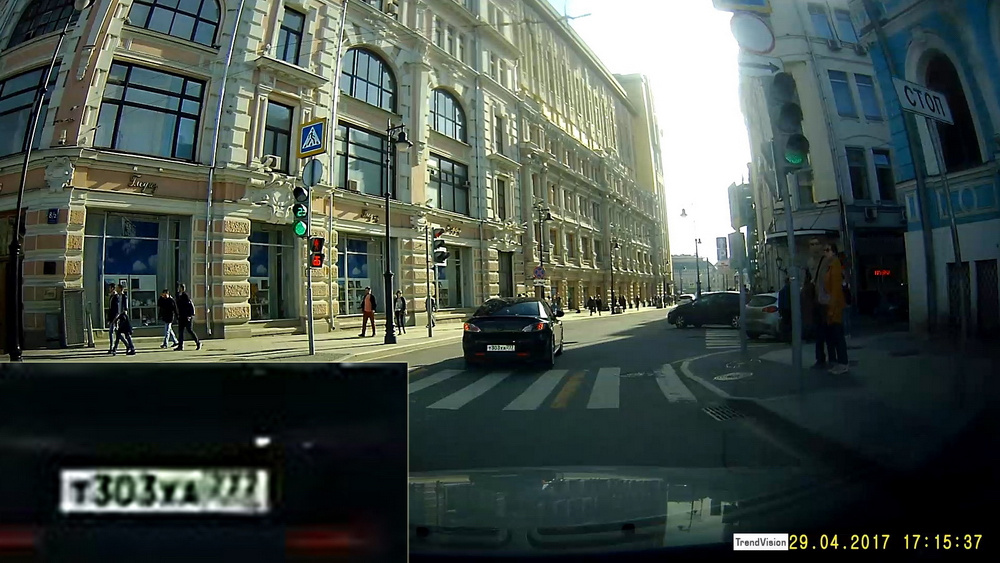
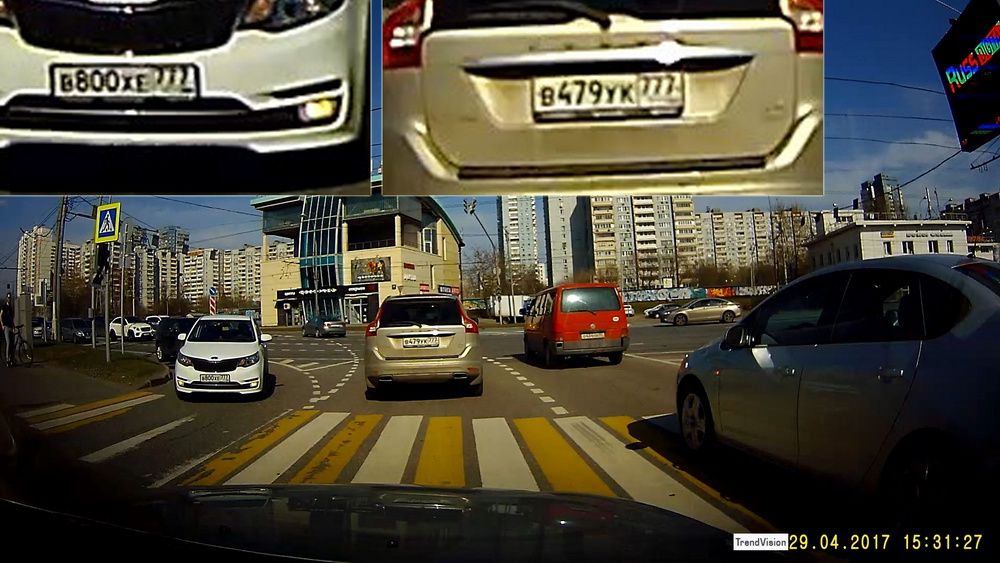

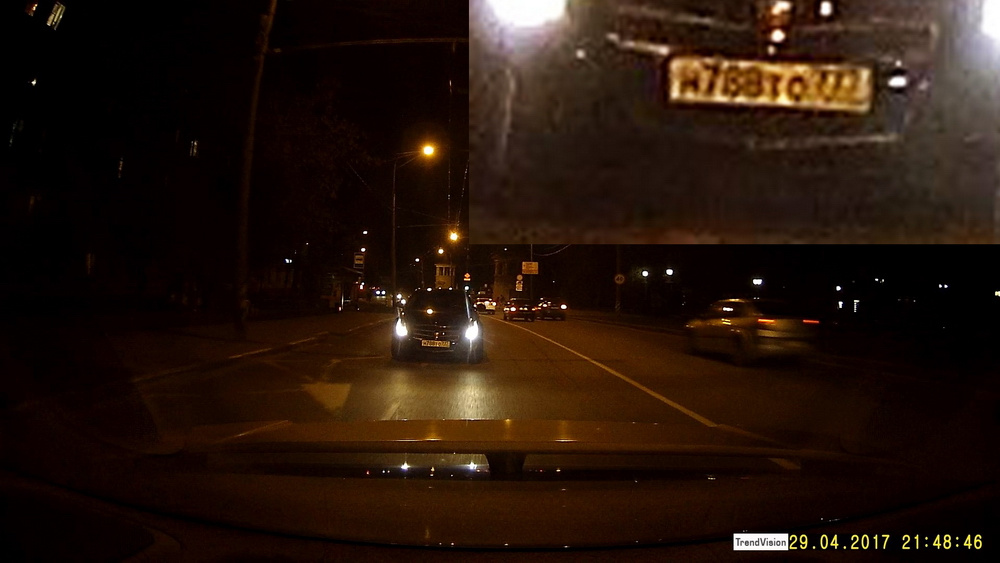 TrendVision Tube Entries:
TrendVision Tube Entries: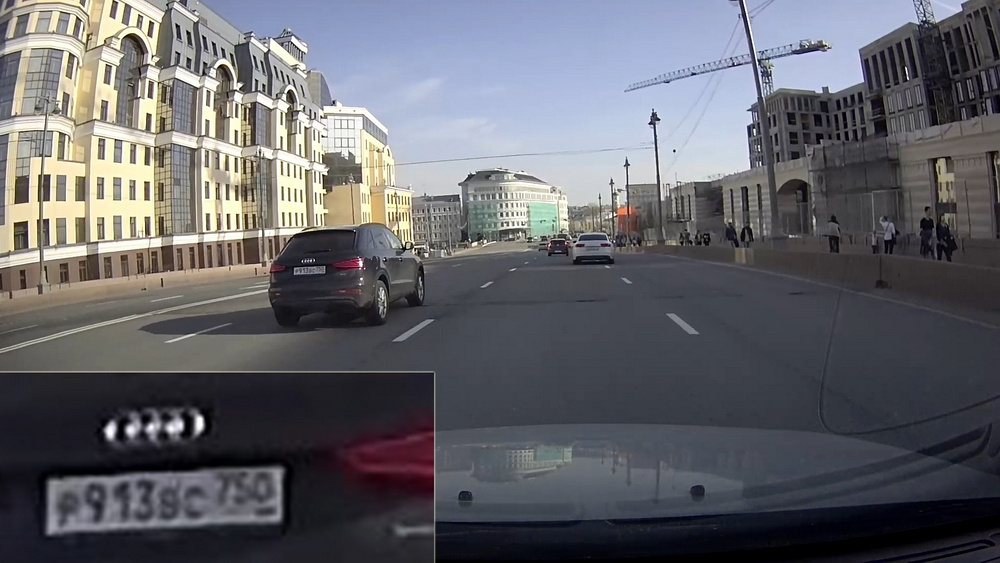
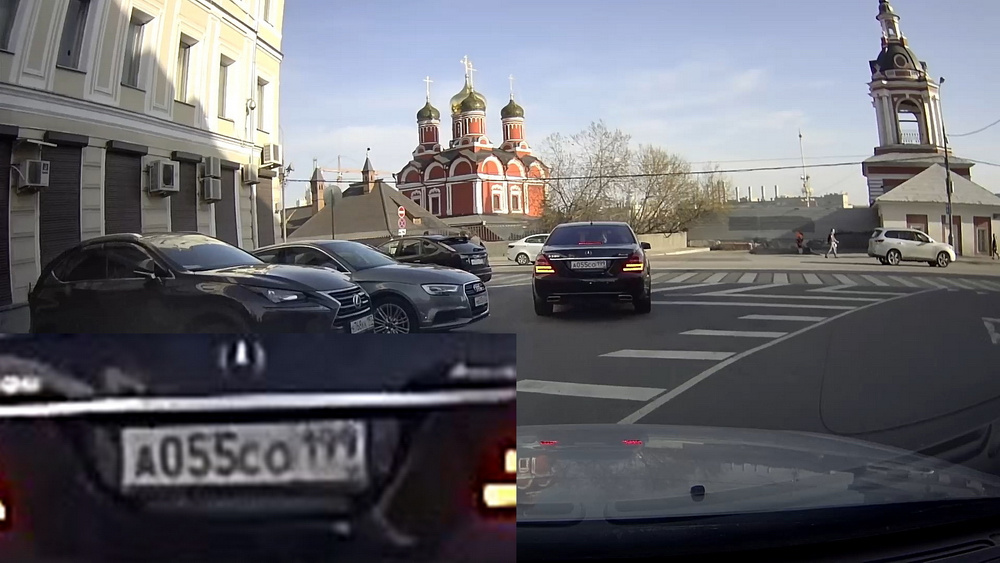
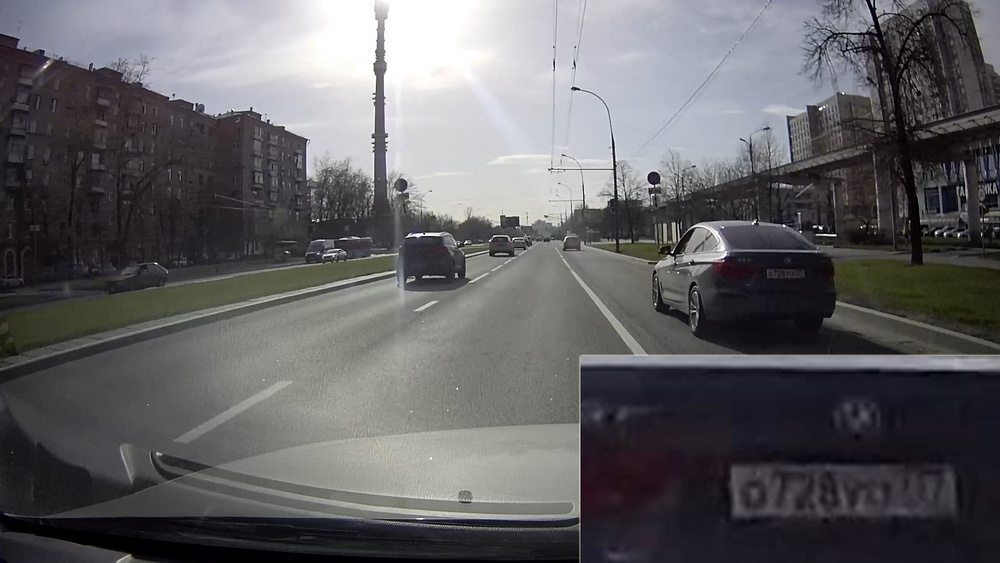
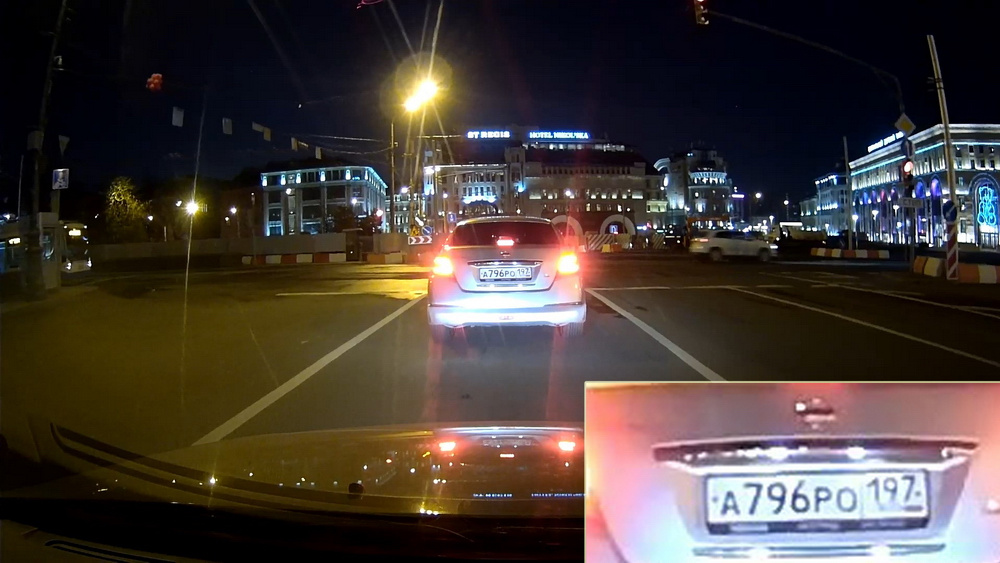
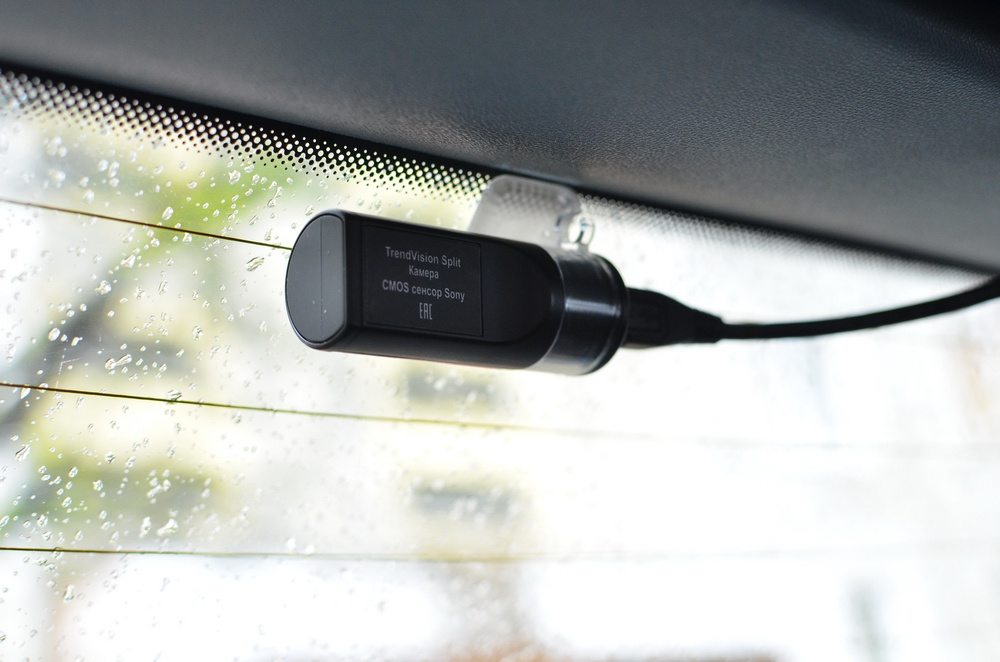
In my opinion, the records are very worthy like TrendVision Split, and Tube. Of the noticeable differences between the models, I note a more correct white balance for the Tube at night. In addition, the same model more gently, without any special "jerking" builds the brightness when the headlights.
One of the "trumps" TrendVision Split suggests itself. The camera is tiny, relatively affordable, and with Wi-Fi - why shouldn't it claim to be a registrar to capture what is happening behind the car? Like it or not, but worthy of two-chamber recorders is extremely small. Very often, a motorist has already bought a cool device, which in principle has no two-channel versions. In this situation, TrendVision Split may fall into place.
Due to its size, the model is almost invisible from the outside, it can be safely left in the car. Resistance to cold means that in the winter in a cold cabin, it will still function normally. Well, and Wi-Fi will allow you to view the desired entry without pulling out a memory card through a smartphone.
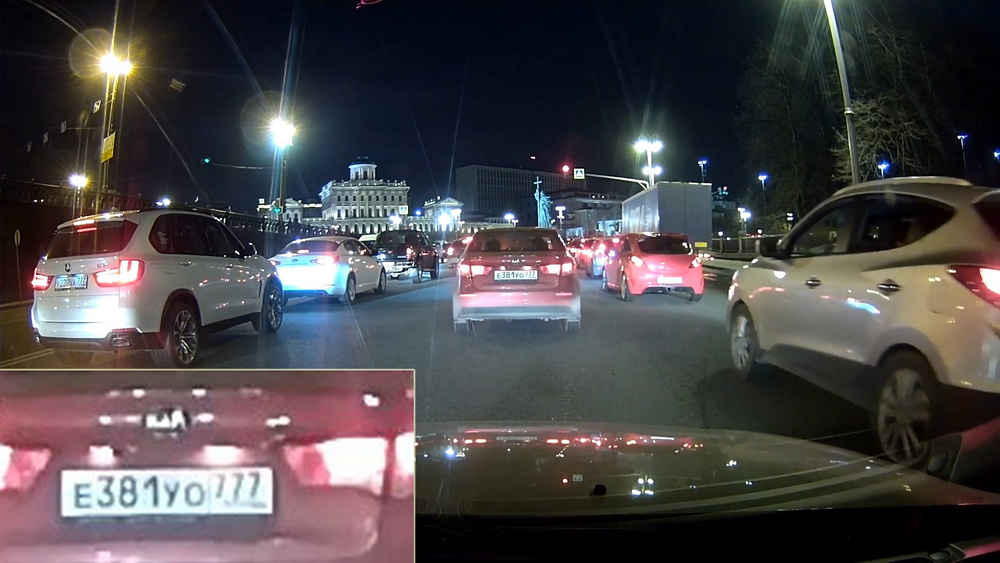
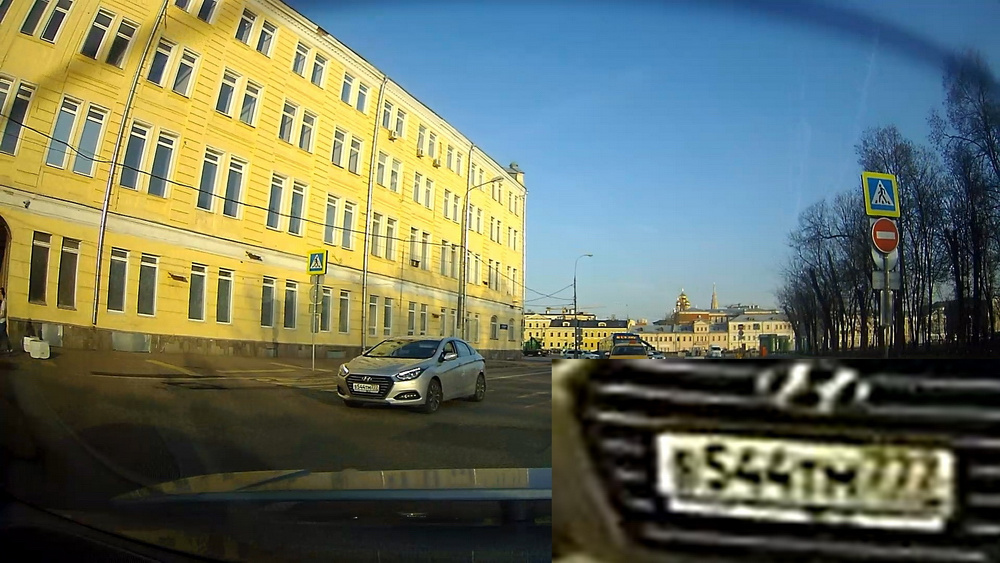
Conclusion
A motorist's dream is what I would call
TrendVision Split and
Tube . Readers familiar with the brand probably know that the main hit developer model is TrendVision TDR-719S (and its predecessor TrendVision TDR-718GP). The devices have a lot of unique chips, but, whatever one may say, these are to some extent models for geeks. Devices with a lot of settings and cool features, the essence of which still needs to be understood.
Whereas the average motorist makes quite a clear set of requirements: so that it is simple, reliable, with excellent shooting at night (during the day almost every other registrar removes the minimum acceptable). And inexpensive. From the experience of communicating with sellers, I can say that quite often buyers directly say - they say, we don’t need your GPS or any other additional functions. TrendVision Split and Tube, in my opinion, is really the quintessence of such aspirations of a wide range of consumers.
I am extremely interested in the views of readers Geektimes, so I urge you to share your opinion about the models. Indeed, judging by the comments to other registrar reviews on Geektimes, the TrendVision news also answers the bulk of your requests. Extremely compact size, control over Wi-Fi, frost resistance to -30 ° C, excellent shooting and more than humane price. TrendVision Split - 7 900 rubles, TrendVision Tube - 8 900 rubles.
The choice between the two models boils down to what installation option you prefer. The Tube model is a classic recorder, just plug it into the microUSB connector of the power cable and the other end into the cigarette lighter adapter. Split will have to be confused once, just throw wires from the windshield will not work. It is necessary to lay the cables "in the mind", but then you will not even remember about the recorder. Again, feel free to write in the comments, which of the two new TrendVision recorders would you choose?